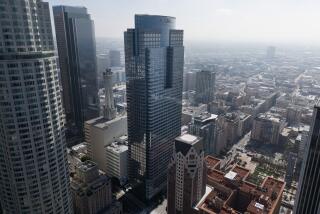Cost of Preserving Historic Buildings
The deaths, injuries and financial losses which resulted from the collapse of many older buildings in San Francisco during the recent earthquake should provide a valuable lesson to Los Angeles about the dangers, and hidden costs, associated with “historic preservation.” Although upgrading older structures makes them somewhat safer, few would dispute that new construction is safer and cheaper. Nevertheless, the public exerts pressure to prevent the destruction of aging buildings without fully considering the full cost of it.
There is little doubt that our lives are enriched and our sense of community is enhanced by maintaining ties to our past, which is often accomplished by preserving buildings from another era either for their historic significance or simply because they evoke memories of a different age. Benefits typically have burdens, but the burden of maintaining a beautiful old building is not always obvious until it is revealed with devastating clarity as in San Francisco.
A simple economic model illustrates the often unseen competing benefits and burdens of preserving historic structures. If the residents of Los Angeles could decide how much they would collectively spend to preserve a specific structure based upon the enjoyment they derive from it, they could pay the owner of the building that sum either in cash or by reducing taxes on the building. In return, the building owner would upgrade the building to make it safe and maintain it for the public’s benefit. If the payment does not equal or exceed the owner’s cost of upgrading and maintaining the building, then it would not and should not be saved.
Some claim that the value of art, life and other “intangibles” cannot be calculated, yet we make such calculations every day. Doctors are not stationed on every corner, firemen do not inhabit every house and police officers do not accompany each of us home every night.
If the public recoils at the thought of replacing historic structures with steel and glass behemoths, then perhaps the fault lies not with progress but with aesthetics. California’s unfortunate geology precludes it from preserving and enjoying many structures which would be safer elsewhere. It is time for Los Angeles to reckon with its unusual circumstances and to decide whether it is willing to pay the price of maintaining older buildings.
ANTHONY S. BOUZA
Los Angeles
More to Read
Sign up for Essential California
The most important California stories and recommendations in your inbox every morning.
You may occasionally receive promotional content from the Los Angeles Times.










